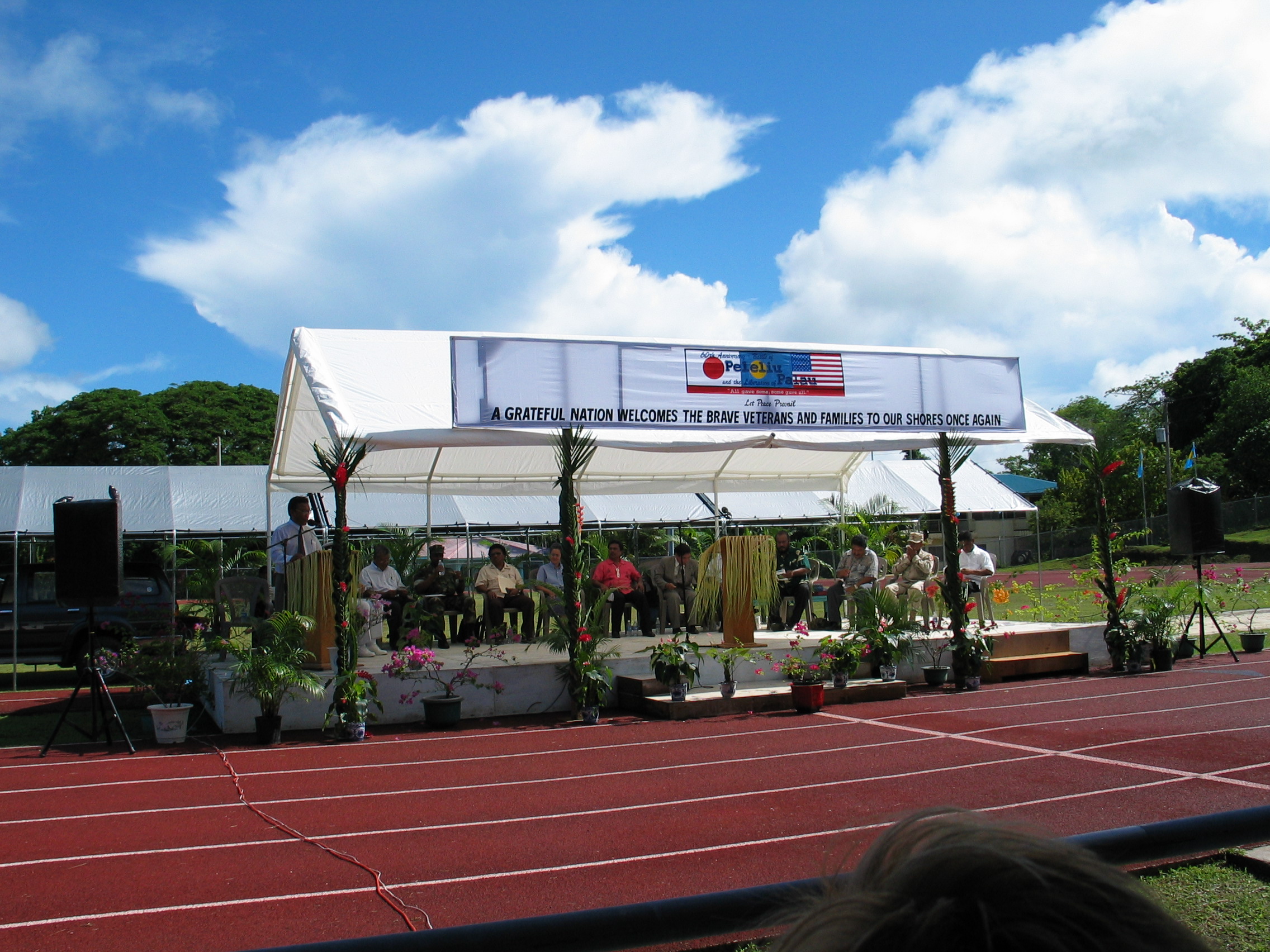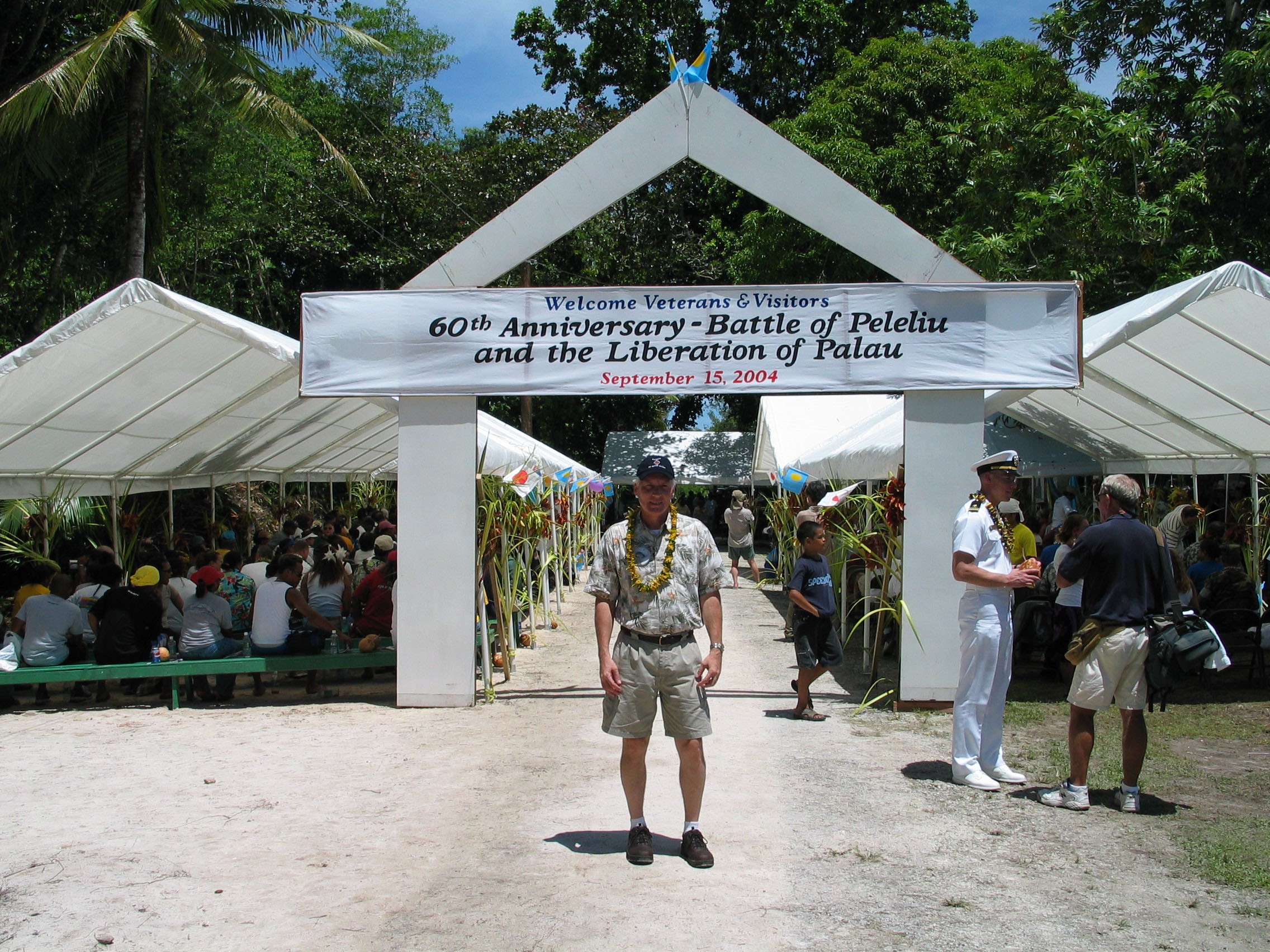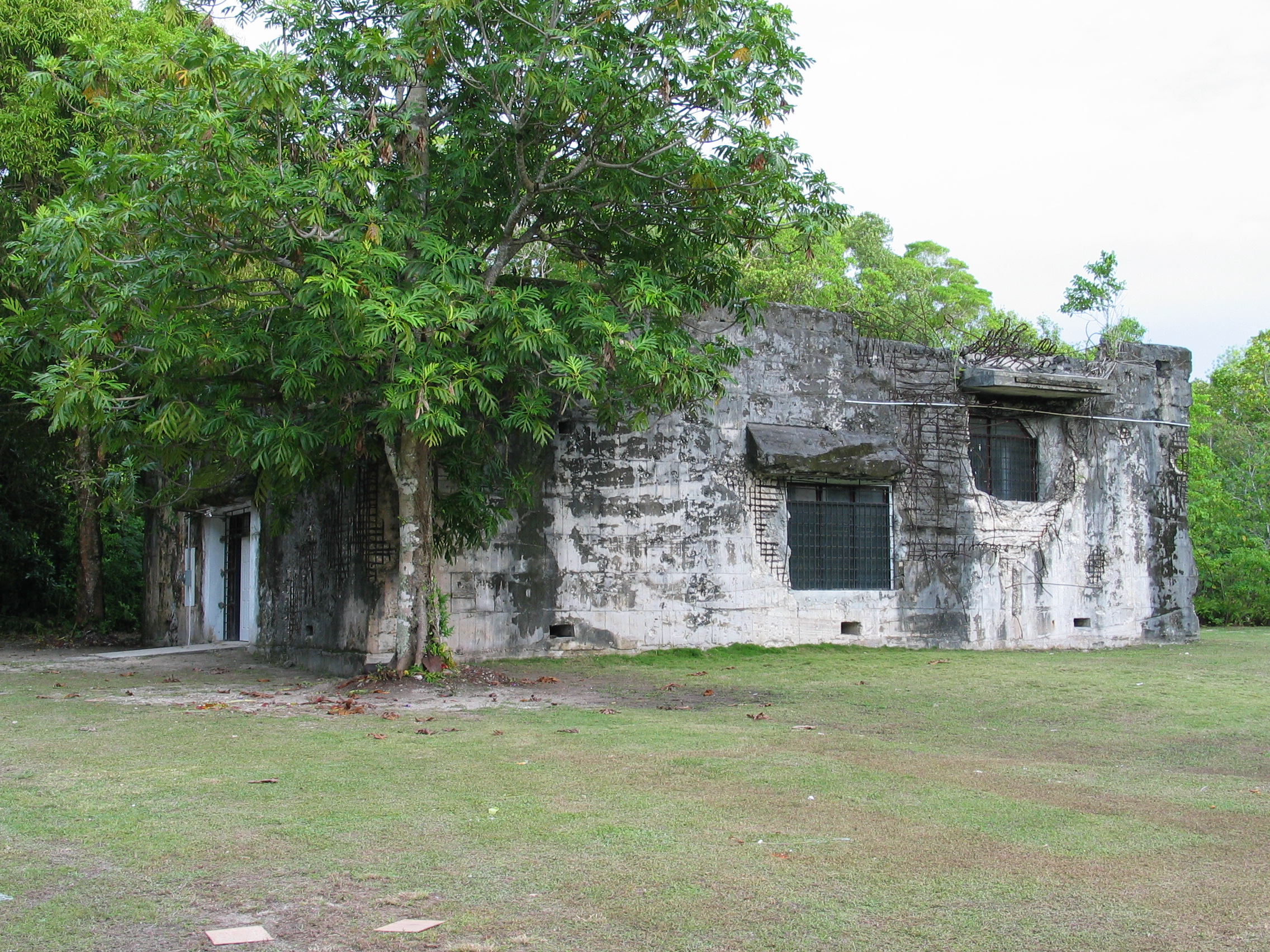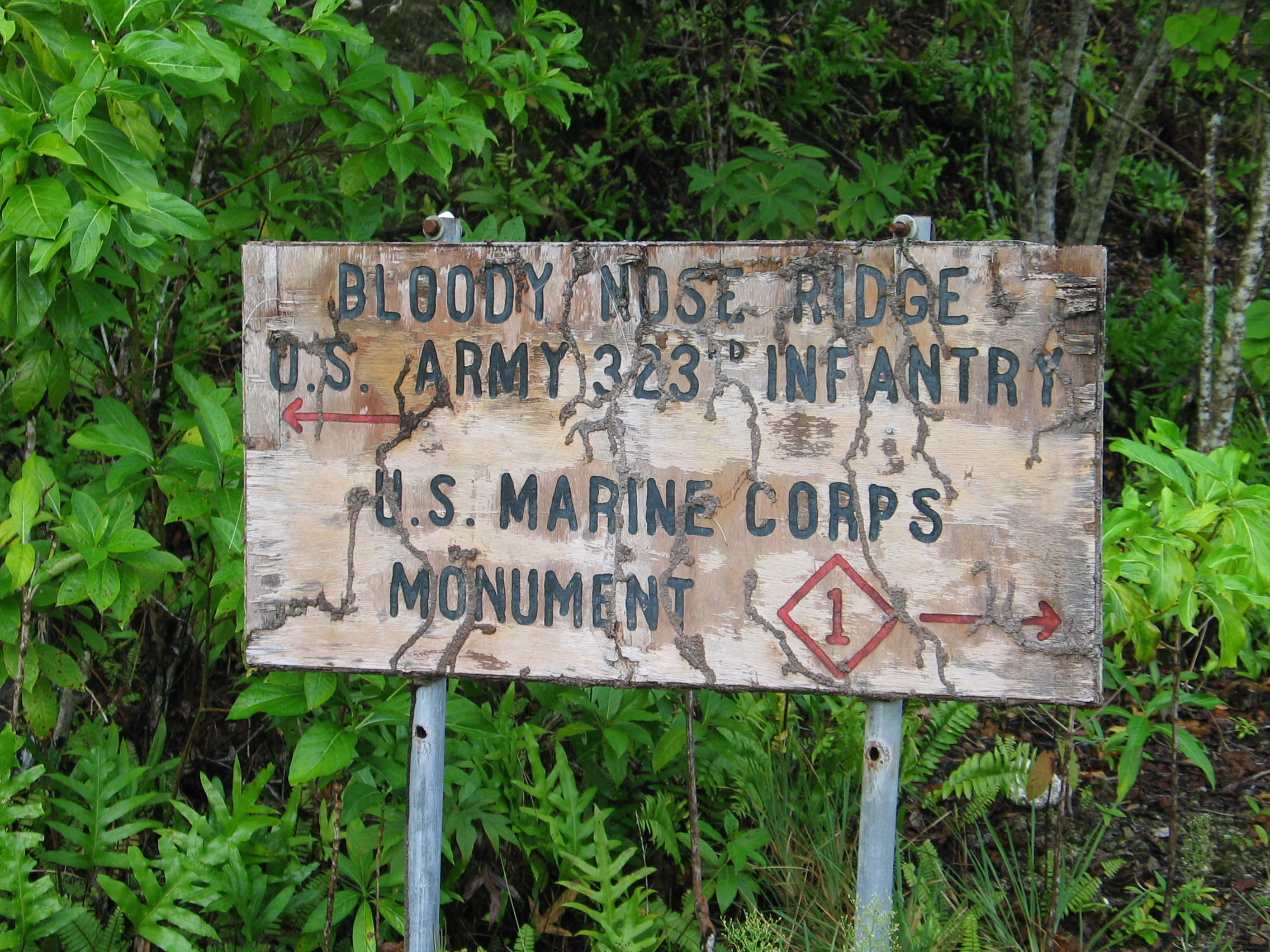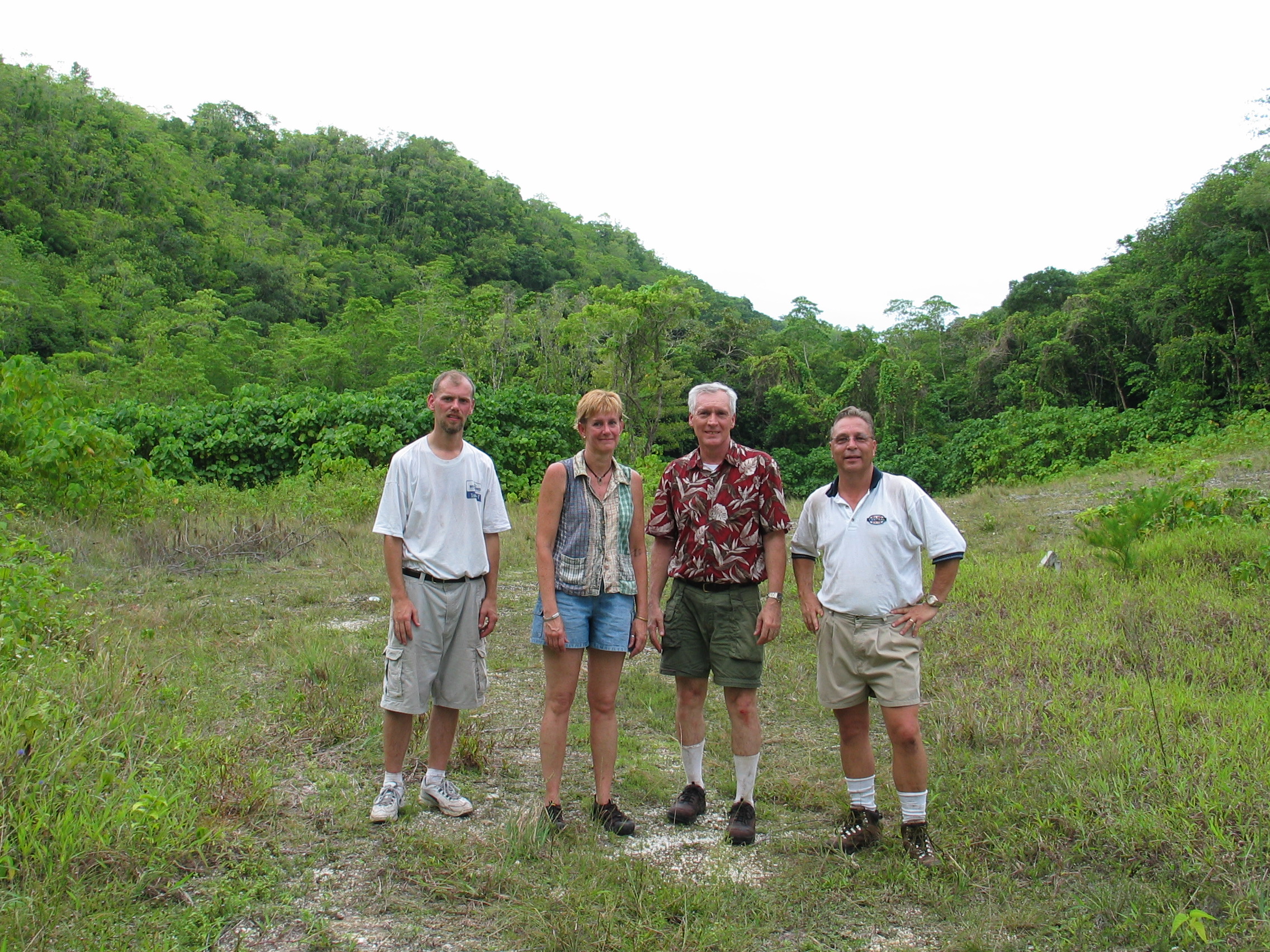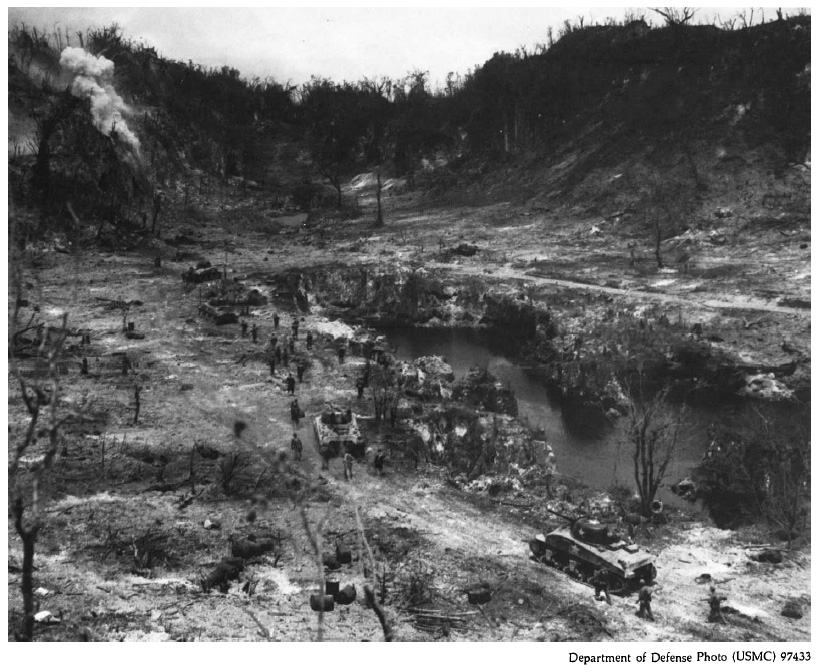Peleliu Anniversary Ceremony
The Palauan government and the people of Palau could not have been better hosts. On the morning of September 15, the government sent a boat to pick up our group for the initial ceremony to be held on Koror. The 60th Anniversary of the Battle of Peleliu and the Liberation of Palau was being held at the Palau National Track and Field. We were given VIP seating. Students from the local high school paraded before us holding either American or Japanese flags. Each of the fourteen American veterans, in attendance, was individually recognized for his sacrifice. When their name was called, each approached the podium, saluted the American flag and then saluted the officials - all to the applause of the people of Palau . Several dignitaries spoke including the US and Japanese Charge d' Affairs. His Excellency, Tommy Remengesau, president of Palau, concluded the remarks by reiterating Palau 's friendship with the United States and Japan while honoring those who paid the ultimate cost.Representing the US military was the crew of the USS Lake Erie (CG-70) commanded by Capt. Joseph Horn. The color guard consisted of members of the US Navy and Palauan police. Crew members from the Lake Erie marched in review as a helicopter passed overhead. Veterans were invited by the Captain to tour the ballistic missile defense test ship anchored in Koror's harbor.
Following the Koror ceremony, we returned by boat to Peleliu for the second portion of the ceremony, but first we enjoyed a traditional Palauan lunch provided by the Peleliu State.
Once guests were served, the locals were invited to eat. It was a festive occasion and we had the opportunity to mingle with these wonderful Palauan citizens. During the ceremony, both American and Japanese veterans were recognized. We heard a very impassioned speech by Chief Reklai Bao Ngirmang, a career Marine and Vietnam veteran, giving praise and affection to his fellow Marines. Palauan veterans, on leave from the Iraqi conflict, were recognized demonstrating the strong bond between Palau and the US . Peleliu Governor Jackson Ngiraingas recognized Tangie Hesus for his efforts in establishing the museum. US Navy Rear Admiral Arthur Johnson spoke of the battle and the sacrifices of our veterans but reminded everyone that Japan and the US are now allies with the war on terrorism. Following the speeches, the ceremonial ribbon to the museum was cut and people flocked inside.
Hiking Hill 140
For the remainder of the time on the island, I wanted to walk in the footsteps of my uncle. Not knowing exactly where he fell, I still surmised that it was on or near Hill 140 and near the Five Brothers. Some of my tour mates were willing to climb Hill 140. From the war photographs I thought I knew the area, but nature's growth made everything confusing. With Tangie's help, we found the hill and climbed it.Although the hills on Peleliu are not high they are very steep and the coral rock is quick to cut flesh or tear clothes. At the top we remained confused as to what we were seeing. Unlike the battle pictures, the infamous Horseshoe is completely covered with vegetation. What was more trying was that vegetation on Hill 140 was taller than we were; thus, making the sighting of landmarks difficult. Strewn along the path were an abundance of ammunition, trip wire, and US and Japanese canteens. Canteens are the most interesting of artifacts since GIs would scratch their names onto the canteens providing a permanent record for researchers. Could I find my uncle's?
Navigating down the hill was equally challenging for a fall onto the coral rock would have been nasty. Opposite Hill 140 was the Five Brothers range with its numerous caves attesting that both the Marines and Army had a most difficult time trying to close the Umurbrogol pocket.
From the battle pictures, I thought we could simply walk through the Horseshoe on our way out but this was impossible. We had to walk along the side of Pope's Hill in order to make our way out. Once out, we congratulated each other. We were completely soaked from perspiration having experienced first hand the heat and humidity of Peleliu. I had no idea if I was close to where my uncle fell, but I did know that many Marines and soldiers did fall where I walked.
Read More...
